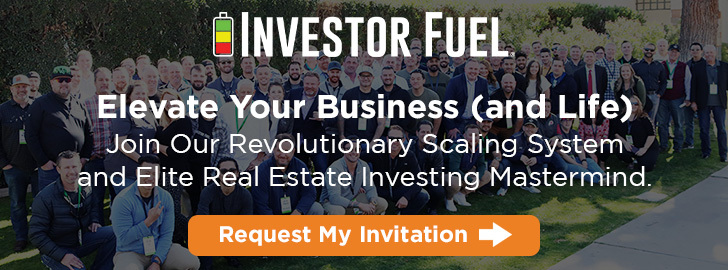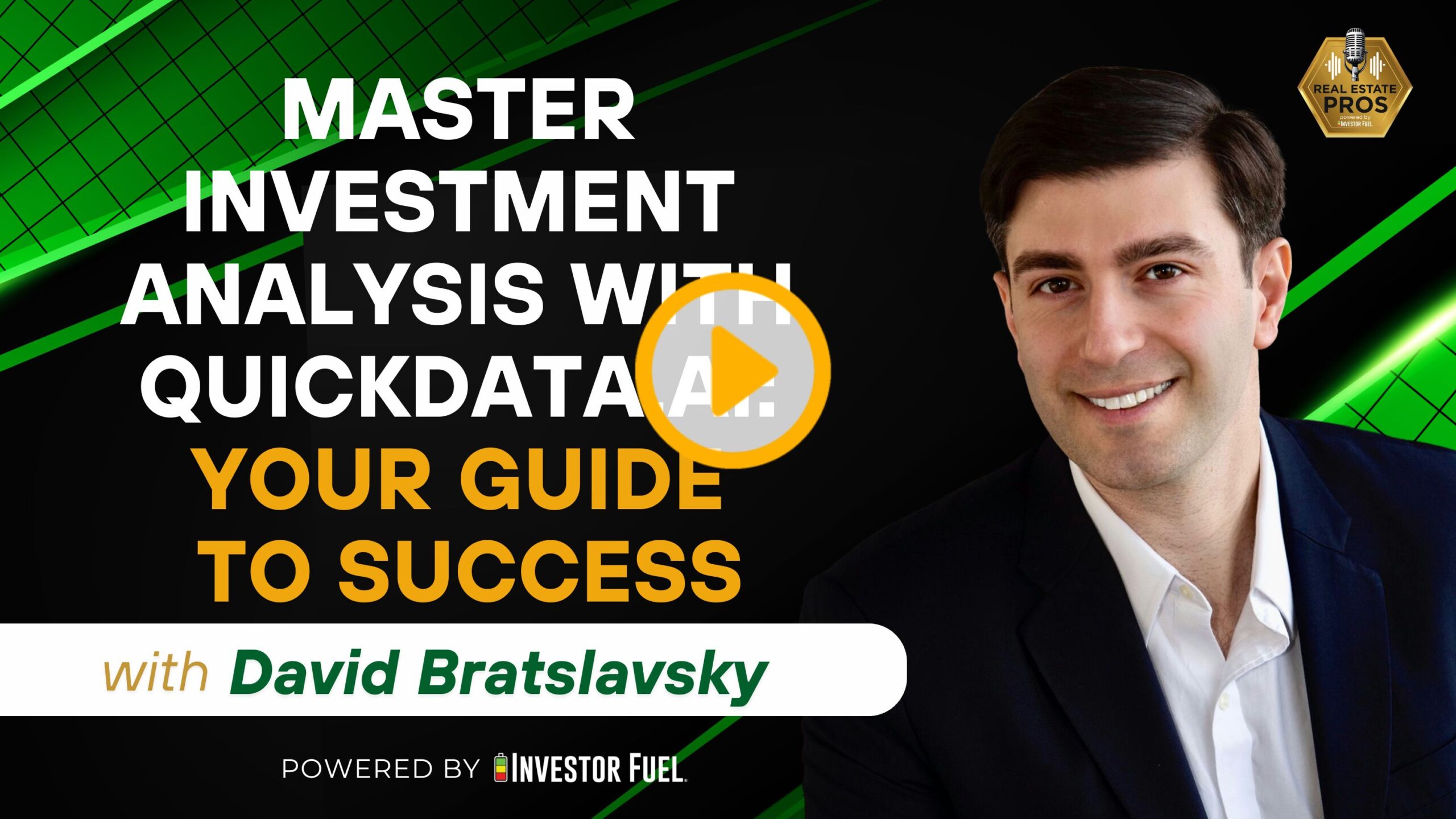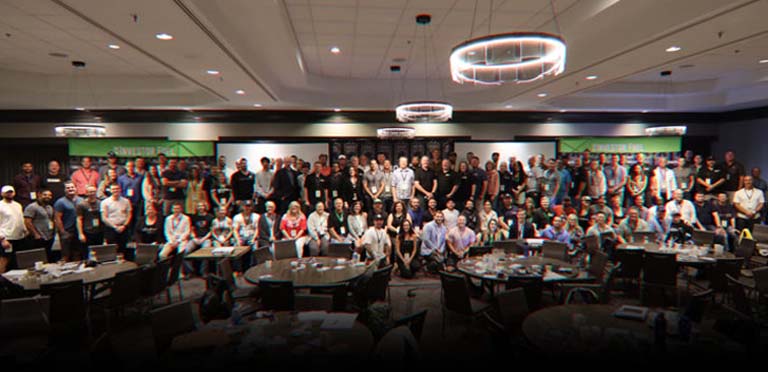
Show Summary
In this conversation, John Harcar interviews David Bratslavsky about his journey from technology to real estate investing, focusing on the development of QuickData.ai, a tool designed to automate the tedious underwriting process for multifamily real estate. David shares insights on the challenges of manual underwriting, the importance of mentorship, and how AI can streamline the investment analysis process. The discussion highlights the significance of accurate data extraction and the potential of technology to enhance efficiency in real estate investing.
Resources and Links from this show:
Listen to the Audio Version of this Episode
Investor Fuel Show Transcript:
John Harcar (00:01.775)
All right. Hey guys, welcome back to our show. I’m your host, John Harcar, and I’m here today with David Bratslavsky. Hope I said that right this time. And we’re going to talk about, know, besides his journey in business, right? We’re going to talk about, and this seems really cool, how he’s building in building an AI for multifamily investors to underwrite a deal quicker. How cool is that? Remember guys, at Investor Fuel, we help real estate investors, service providers, all real estate entrepreneurs.
two to five X their business. We provide the tools and the resources to grow that business that they want to have, which in turn helps them live the life that they want to live. So David, man, welcome to our show.
David Bratslavsky (00:43.394)
Yeah, thank you for having me, John. Appreciate it.
John Harcar (00:45.563)
Yeah, I’m excited to talk about this because, you know, I hate underwriting. It’s not a passion of mine by any means, but any way to make things easier, you know, especially for us investors is always a welcome thing. But before we talk about that and get into the weeds, why don’t you tell our audience a little bit about your experience in business and real estate or what got you to today?
David (QuickData.ai) (01:08.674)
Yeah, sure. You know, my background was really in technology and as thankfully we became more more successful as a technology company, I got some savings and I wanted to invest in multifamily real estate. I knew it was a hot sector for a good reason. And, but I didn’t really know how. So I called up a friend of mine who was a successful real estate multifamily fund manager and he invested in multifamily. That’s his primary focus. And I said, listen, if you teach me how to underwrite, how to analyze multifamily.
estate deals, what makes a good one, how to really dive deep. I will come into your office and I will do that for free. And so for me, I got a free education in underwriting multi-family real estate. He got free labor, so he was happy I was happy. And I really got to know how the process works. And that’s where I learned, as sexy as it sounds, multi-family underwriting.
and it is sexy, really like 90 % of my time was spent looking at rent rolls, extracting that data manually, inputting into an Excel financial model, copy paste, copy paste, copy paste, same thing with a T12 operating statement. We basically copy paste all that data into the Excel model. And so underwriting 90 % of the effort was copying and pasting the data into the model so you could run your analysis, right? And so when all these new tools came out, AI and…
machine learning, you know, we are experts in that. So I combined the sort of industry specific knowledge of now what I understood to be multifamily underwriting with our expertise in technology and say, well, why can’t we automate the copy paste portion that’s taking up a majority of, you know, the time that.
investor or a broker or a lender is, you know, spending on underwriting a multifamily deal. And that’s exactly what we’ve done. So now, you know, I’m happy to share it with you. It’s basically a super fast way to underwrite multifamily real estate by uploading the rent roll, uploading the T12 statement directly from Excel and getting back all the data, you know, categorized, organized directly into your financial model. So you could jump right into analysis and skip the tedious copy and paste part.
John Harcar (03:11.571)
Well, if we have enough time and you have it available, you can show us a demo. But once we get to that, can always do, you can always put maybe a link to a demo in the notes too. But if you’ve ever watched any of my podcasts, I like to go backwards. I think sometimes there’s always a nugget in the backstory, how someone got to where they’re at. Someone listening might be in that part of their journey. So for you, you have a tech background. You decided to get into multifamily or just real estate.
David Bratslavsky (03:16.865)
Yeah.
John Harcar (03:37.287)
Was there any influences, any person in your life, anybody you know, anybody that you were related to that was in real estate in the past that might’ve planted some type of seed for maybe future growth of how you got into.
David (QuickData.ai) (03:50.082)
Yeah, you know, I was spending a lot of time in New York. New York’s a wonderful city. But it’s, think, true across America and maybe even certainly other parts of the world as well, is when you look at how wealth creation goes from generation to generation, real estate is really like a major, you know, it’s one surefire way to do it. And if you’re smart about enlisting in real estate, that equity builds up and builds up. And so tech is sexy. That’s the industry I’m in. I love technology.
estate, if you’re not investing in real estate, if you’re not making that a part of your portfolio, I realize you’re really missing out. So I knew I needed to invest and I really started as an LP, as a limited partner in several deals. And as I mentioned, in order to become an educated LP, I asked, well, how do you actually analyze a property for investment? But I knew I wanted to get into real estate in one way or another. And it just happens to be that we built Quick Data AI as technology for real estate because we combined the
really I understood that to invest in real estate is a way to build generational wealth and that’s how it started.
John Harcar (04:52.947)
100%. And I love that. So you decide to reach out to this gentleman to help you. And since get a mentor, you’re a tech guy. You know all the stuff that’s available on the internet, right? I mean, why would you need to search for someone to show you when you can just find it all on your own?
David (QuickData.ai) (05:11.544)
You know, there’s nothing like having a mentor. There’s nothing like understanding something by talking to another human being. Even though with all these AI tools and ChatGPT, you’re never really gonna learn the nuances of something, which is why talking to other people and having…
actually a network and that’s where honestly investor fuel is so valuable as well is that you know unless you’re talking to real people dealing with real challenges analyzing real properties and you know guiding you through that or not necessarily holding your hand through everything there’s a lot you can learn on your own but those fine nuances that are going to make a difference you can only really learn that from experienced individuals and being part of that kind of network.
is super critical. that’s sort of what I did. And if I hadn’t done that, if I was just looking up books or asking Chad GPT, I would have never really understood how to underwrite real estate properly because there’s just too many nuances to know.
John Harcar (06:04.861)
many smaller variables that sometimes are like just on a per deal basis, right? There’s something that doesn’t happen all the time. It just comes up here. And no, I get that. And I agree with you 100%. It’s like that that mentorship not only shortens your timeline, your learning time frame, but also gives you invaluable knowledge of what not to do also. So you’re starting to underwrite these properties for this guy. He’s showing you, I mean, what were some of the struggles that you were having in the whole underwriting process as you were learning?
David (QuickData.ai) (06:35.5)
Yeah, mean, it’s really two things. One is just the tedious nature of underwriting real estate when you’re doing it manually. it’s literally, it sounds so sexy, as I mentioned. And then I spent 90 % of my time on each deal extracting information from the offering memorandum, from the rent roll, from the T12 operating statement, and just plugging those numbers in one by one into the underwriting model. So that was just like, OK, challenge number one is just kind of this manual underwriting.
takes too much time, it’s error prone, it’s boring. I want to get to the sexy part where we’re trying to figure out how we’re to build value out of this property. But that’s one. Two is really understanding, you analyze the property, you plug in all the numbers, and now where does the value come in? How are you going to run this property better than its current owner?
you know the idea is okay i’m gonna raise the rent but on what basis can you justify raising the rent like does the market bear it does it not how do you know or i’m to lower expenses well what expenses can you lower so for example if the electricity and the water expenses on a property are high well first of all what does high mean how do know it’s high well
So understanding what it means that the expenses are high relative to what it should be, that’s again where individual mentorship and insight comes in where you’re not going to get away from ChatGPT. With all due respect, I love ChatGPT, but it’s really like understanding the industry and understanding that from a human being. And then two is how do we lower that? Maybe we put some kind of metered billing on the water, right? And that’s a way to bring down.
So it’s those nuances between the tediousness of underwriting things manually and also understanding once you’ve underwritten a property, where exactly does the value come in? And if you upgrade certain amenities in the unit, what should you upgrade? Is it the countertops? Is it the refrigerator? Is it the washer and dryer? And what are you going to get as a return on investment on those upgrades? So that’s where the fun part comes in. And that’s where I think working with
David Bratslavsky (08:46.272)
an experienced operator and learning from them is really key. And those are the two challenges that I think, like working with an individual person that really knows what they’re doing is really helpful.
John Harcar (08:56.093)
Got it. Got it. All right. So what does your team look like? Is this a software? Is it S-A-A-S, or Software as a Service? That’s it. OK.
David Bratslavsky (09:05.07)
Yeah, so it’s called QuickData.ai. The website is QuickData.ai. I encourage everybody to go and check it out for yourself. And it’s super, super simple to use. And I’m happy to actually demo it, if you don’t mind. But basically, it’s an Excel add-in. And our premise was that 99 % of the time, you’re underwriting multi-cam,
estate, you’re probably doing it in Excel. And chances are you have your own Excel model that you prefer. And so what we’re saying is like we’re giving you two options. One is you could use our own underwriting model in Excel. And we have an amazing one put together by a colleague of mine, Craig Drummond. Shout out. And then you could buy that.
and use it and it’s already you know it’s really the most amazing multifamily real estate model that I’ve used but a lot of people prefer their own and for good reason you know like people have their own nuances that they want to take into account and what we’ve said is look we’re gonna create an Excel add-in basically an extension of Excel where if you prefer whatever model for underwriting you prefer in Excel you could use our software from within Excel so you go to Excel you upload the rent roll
You upload the T12 operating statement from within Excel and it does all the number crunching and parsing and data extraction and categorization on our end. It’s just happening in the cloud. It’s just magically happens. And then you get all that data back right into your financial model where it needs to go in order for you to analyze the property. So whatever underwriting model you’re using in Excel, this will work for you. And whatever a rent roll, it doesn’t matter what it looks like, whether it’s long or short.
whether it has this layout or that layout, if you’re uploading a rent roll, we’re gonna extract that data accurately and put it in your financial model accurately. That’s the number one thing. And T12, we automatically categorize all the revenue items and all the expense items by line item. And so we automate that whole process and it all goes into your underwriting model in Excel. So that’s the fun part is that you don’t really have to log in anywhere. You don’t have to learn a new process. You get to do what you’ve been doing all along.
David Bratslavsky (11:10.126)
which is underwriting multi-family real estate in Excel, how you’ve been doing it with your model, but now we’re automating the tedious part for you.
John Harcar (11:18.099)
You make life so much easier. So that’s awesome. So what does your team look like right now?
David Bratslavsky (11:25.08)
Yeah, we have an amazing team. Our lead developer is based in the US. We have another gentleman who is an amazing intern, actually. But he’s helped us tremendously. He’s based in Michigan. We have five people total working on the tech, myself included. So that makes us six. And we’re hiring.
especially now that we’re going to market. So anybody that wants to partner, anybody that has their own SaaS software that does multifamily underwriting, we have an API that works beautifully. So you can integrate it into your product if you’re building a multifamily real estate underwriting product of any sort. We will power the data extraction portion of it through our API. yeah, we’re happy to partner with.
John Harcar (12:11.475)
What kind of trends maybe are you seeing right now? mean in the underwriting process or are there any that you are kind of viewing or keeping an eye on?
David Bratslavsky(12:21.57)
Yeah, think look, AI is obviously the new buzzword and everybody wants to know like how do I use AI, how do I use AI? And there’s obviously tools out there like ChatGPT and summarizing things and I think we’re familiar with those. But specifically for multi-family real estate, I haven’t really seen much that is just kind of like beyond upload this into ChatGPT or maybe create a deck using another, know, there’s kind of like, I would say tools out there and they are helpful but
there’s nothing that really addresses the problem of multifamily real estate underwriting, the way that we address it. And so that’s why we had to create it from scratch. We realized there’s nothing on the market that does exactly this the way we want to do it with accuracy. And so we’re like, OK, we’re just going to have to create it. So AI is the new buzzword. And people are all wondering, how do I use AI? And I think for us, it was underwriting. And so we created a product that you could use.
John Harcar (13:17.853)
That’s awesome. So walk me through the process. get a property, you know, I get it under contract or I don’t, maybe I just want to analyze it. What information do I need to give to you? Like what am I bringing to you?
David Bratslavsky (13:20.717)
Yeah.
David Bratslavsky (13:32.48)
Excellent. Yeah. So let’s say I’m a real estate investor, right? So what am I getting from the broker? I’m getting effectively three documents, you sometimes more, but I’ll kind of keep it simple, right? Number one is the offering memorandum that summarizes the property details. Okay, so that gives me a good layout of the neighborhood and maybe like
that’s helpful. Number two is the rent roll. The rent roll is key because you know exactly how many units are being rented, how many are vacant, what is the average rent per unit type, but that’s all in this like long extended document and one by one I get to look at that data but it’s rarely summarized for me and that’s where our software comes in. I’ll get to that in just a moment. So the document number two is rent roll. How you know sort of how many units are in the property, how many of them are occupied, and what are they renting for?
That’s kind of the natural way the rent roll is. We all know that if we’re a multifamily real estate. And document number three, very, very important, is the T12, trailing 12 months operating statement. And again, if you’re multifamily real estate, we all know that. I’m sure listeners to your podcast know exactly what I’m talking about. And that basically tells you line by line what are the revenue items. So it’s gross potential rent, you know.
electricity, whatever, we know what that is. It’s basically all the revenues by line item, and I know what they are, and it’s all the expenses by line item, and we know what that is. And so you really know the guts of running this property. What is the money being spent on, and how is the money being earned? And if you don’t know that line by line, it’s very hard to understand, okay, is this property a good investment or a bad investment, and if it’s a good investment, what should I pay for it? And if I pay for it, then how am gonna reduce costs? So if you know that line by line,
statement, now you could sort of say, okay, I’m going to run it differently and here’s where the savings are going to come from, etc. So those are the three documents. The offering memorandum that summarizes the property offering, the rent roll which tells you what each unit is being rented for, and the T12 operating statement that tells you what the revenues and expenses are.
John Harcar (15:30.895)
If I’m not using a broker, and they don’t provide an offering memorandum for me, mean, let’s say get from the seller, I’m going direct to seller, I get the T12, I get the rent roll, I get all that stuff. Does the address and all that just suffice? Can your AI pull up all the information on the community, on the neighborhood and all that, or is there more information that you would need?
David Bratslavsky (15:53.826)
Yeah, right now what we do, and I can show you in just a minute, we can dive into a screen share. okay, so let let me, okay, amazing. So let me share with you the screen, because that’ll really answer all of your questions. here we are. Okay, so here’s a blank Excel. Let’s start with the rent roll, right? Let’s say you get this from your real estate broker or directly from the seller, right? So this tells you what all the,
John Harcar (15:57.883)
Yeah, we got a few minutes. We got about four or five minutes.
You might not be able to. there we go.
David Bratslavsky (16:22.222)
you know, how much you’re getting from each unit, okay? And it could look different, it could look like this. So there’s multiple different kinds of rentals. And let’s open up a T12, let’s see, where I…
David Bratslavsky(16:38.584)
and a T12 looks like, I should have been writing, here we go. Let’s open up this T12. So these are the two documents that you’re getting, right? And you have to input all this data into your financial model in order to analyze it. So how do you do that with Quick Data AI, right? So I’ll show you literally in just two minutes. We have an Excel add-in, so everything happens through Excel. And if you wanna start uploading a rent roll, you basically, here it is.
John Harcar (17:05.437)
So is that just an extension?
David Bratslavsky (17:07.394)
Yeah, it’s an extension of Excel. So you have your model open. It inputs all that data literally in under four seconds right here. So one of the variables that I showed you, which was, let’s see, where is it?
David (QuickData.ai) (17:23.196)
one.
David (QuickData.ai) (17:27.266)
This one. I’m sorry. Anyways, one of the rentals I had open, I’m sorry, should have. But it extracted all that data and you see there’s literally multiple, multiple units and all that raw data is over here.
John Harcar (17:32.691)
No, it’s okay. It’s okay. I get it
David Bratslavsky (17:43.438)
in your financial model now and it summarized over here so you know it has 92 % accuracy, has 253 units of which 234 are occupied etc. and it automatically creates a unit mix summary. Like all of this is automated and you could plug in this data into the rest of your financial model. So if you ever used Excel you know how that works so I don’t have to go into much detail but these are the outputs of the rent roll.
generated automatically and you can use them as inputs into the rest of your financial model. And the same thing is happening with the T12. And I know we’re limited on time so I’m skipping over some of the steps, but if I upload a T12…
David (QuickData.ai) (18:27.36)
AT12. I just had an issue with my Excel, but let me just start over.
John Harcar (18:36.6)
T12 basically will just do the same thing, right? It’ll populate into a more, yeah.
David Bratslavsky (18:39.488)
Yeah, it’s a…
John Harcar (18:43.699)
Maybe that’s why it’s not letting you do it.
David Bratslavsky (18:44.107)
My computer’s been left alone. It basically allows you to…
David (QuickData.ai) (18:53.036)
Let’s see, categorize a T12 very, very quickly and let me just upload one. Sorry, my computer’s been buggy and I apologize, but any T12, so let me just use this one. There it is. So now it’s crunching all the numbers and all the line items in T12. It’s gonna take about 20 seconds roughly, maybe a little bit less, and what’s gonna come out is all your line items automatically categorized.
summarized. And you could take that data and link it to the rest of your financial model. There it is. Okay. So this is the T12 as we know. There’s the rent, all the line items. And what we’ve done is we automatically categorized each and every line item in the standard way. So gross potential rent, other income.
And then we have the expenses, general administrative, payroll, repairs and maintenance, et cetera. Now, you are able to manually recategorize anything you want. So you’re always in control of the data. So we’re not forcing you into our categorization model, but we’re automating the process. And if you go over here, you basically have the summary. Let’s say there’s like 100 units in the property. You have the summary of the entire ex-
John Harcar (19:52.627)
Okay.
David (QuickData.ai) (20:06.726)
T12 operating statement available for you to input into the rest of your financial model. So you know exactly how much is being spent on rent,
And anytime you upload a new rent roll, these numbers change. Or, mean, operating statement, these numbers change. So if you link these two templates, right, into your financial model, whatever it is, you’re able to upload a rent roll, upload a T12, it automatically categorizes everything, summarizes it in this summary.
John Harcar (20:23.965)
Okay.
David (QuickData.ai) (20:38.222)
and you’re able to use that data in the rest of your financial model. And then you just basically change the assumptions, like loan to value ratio, things like that. So that’s what makes it super, super easy and quick. It used to take me about 25 minutes to copy and paste all these numbers into an underwriting model every time I had to underwrite a new property. Now it takes me literally seconds. And so that’s really where the value of Quick Data AI comes
John Harcar (20:46.152)
Right.
John Harcar (20:55.643)
Mm-hmm. That’s awesome.
John Harcar (21:02.771)
That’s awesome and I can see the value for a lot of members and you know, in our mastermind for sure. mean, we’ve had some discussions about that before about, you know, the length of time it takes to really put all that stuff together, but that’s incredible, man. That’s a great tool. If there’s folks that want to get a little bit more information on this besides obviously, you know, the links and whatnot that you sent me, I’ll put that in the show notes. Is there any better way to get a hold of you? Maybe to get a demo of that?
David (QuickData.ai) (21:31.458)
Yeah, sure. Anybody could go to quickdata.ai. There’s a way to schedule a demo. There’s a way to download the product, install it in your Excel. At the moment, it’s only for PCs. So if you’re a Mac, I apologize, but that’s coming soon. I know a lot of people are using Macs these days, but we have to start somewhere. We started with PCs. So if you’re using a PC, you’re using Excel to underwrite multi-family real estate, this product is going to save you a tremendous amount of time. And you should go to quickdata.ai. You could download it if you want
individual demo or if you need help linking it to your model, you need help installing it, have any questions whatsoever, there’s a way to schedule a demo or ask any questions on quickdata.ai.
John Harcar (22:09.031)
is awesome, man. Great tool. could see, I mean, it’s going to take off. I already know it. And I hope this brings you some people that can definitely use it. I know enough people that can probably use it. I’ll refer, you know, I’ll shoot them something or maybe shoot them this podcast. But thank you, man. I appreciate you coming on here, David, and sharing all that information. Guys, I hope you enjoyed it. Hope you guys took some good notes. If you have interest in this and you see like I can how it can make your life easier, reach out, man. Get a demo and, you know, add that tool to Arsenal.
David Bratslavsky (22:38.316)
Yeah, John. Thank you so much. Been a big plug for Investor Fuel. I love what you guys are doing. Happy to be a part of it. And thank you again for the opportunity.
John Harcar (22:38.439)
See you guys on the next one. Thank you, David.
John Harcar (22:46.841)
I love it, man. I’ll be looking forward to talking to you more. All right, guys. Have a good afternoon. Talk to you later.






